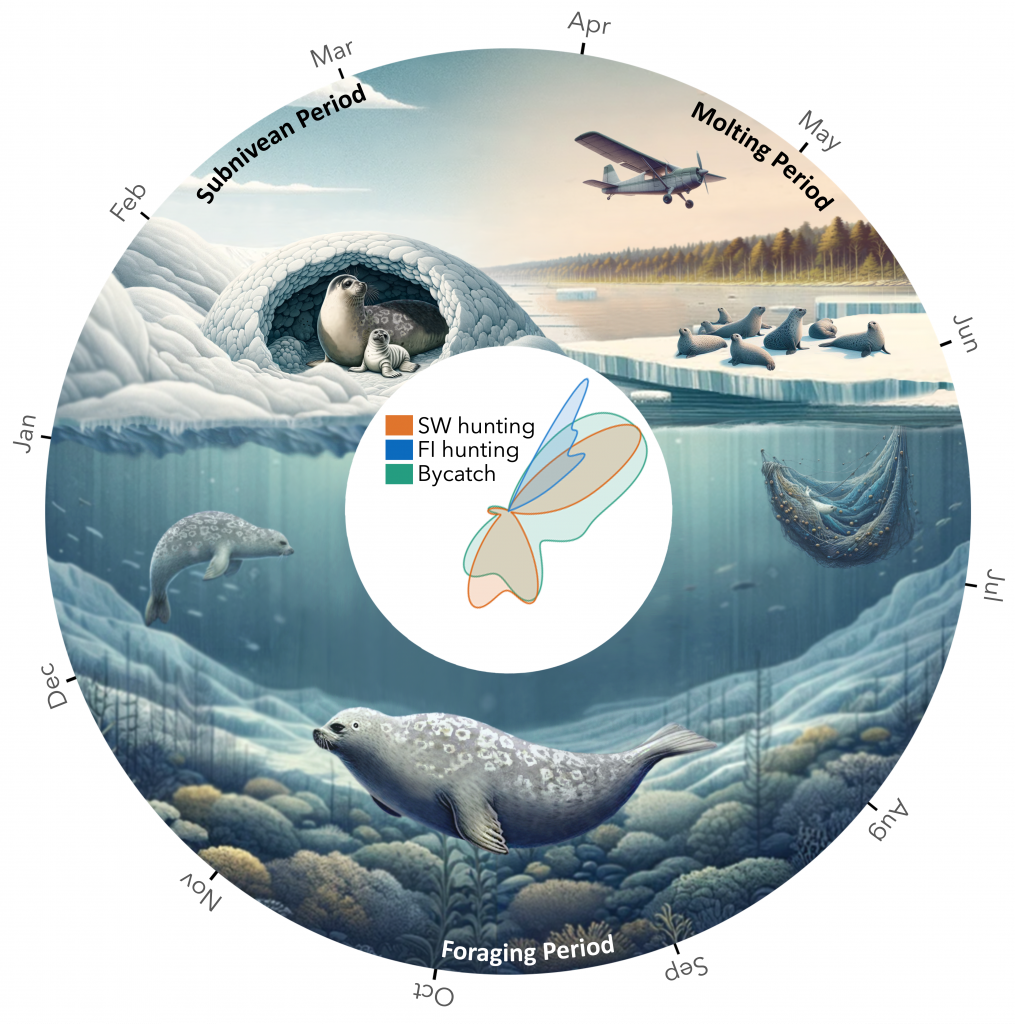I’m Murat, a second year student in the Master’s programme in Life Science Informatics at the University of Helsinki, specializing in Biomathematics and Biostatistics. Last summer I embarked on a 4-month internship with the Environmental and Ecological Statistics group that was funded by HiLIFE, where I was able to apply my quantitative skills to a field I have been passionate about since I was a child: wildlife conservation. And what a journey it has been! Although my internship officially ended in September, I have kept working on the project until now.
My mission was to develop a Bayesian state-space model to help monitor Baltic ringed seals, a sub-species of ringed seals that was once on the verge of extinction due to unsustainable hunting practices and large-scale reproductive failure caused by pollution. Thankfully, the population has been recovering during the last few decades, at least in the northern region of the Baltic Sea¹. However, highly dynamic conditions brought on by changing sea ice patterns, decreasing pollution levels and the recent re-introduction of seal hunting have made reliable population monitoring increasingly difficult, and assessments of population status have not been possible for over a decade. The inability to estimate population size and growth rate has been a major obstacle in determining sustainable management practices.

The results we obtained with this approach were as exciting as they were important. For example, we discovered that the reproductive rates of seals might have fully recovered from the effects of past pollution, and the population may have increased from less than 5,000 to nearly 30,000 individuals! We also discovered that the recent re-introduction of seal hunting has had a notable impact on population growth, though not critical enough to ring any alarm bells for the seal population—yet. Another interesting finding was that seals may be behaving differently during years with low sea ice cover, hauling-out on ice in larger numbers during their annual molt in the spring. Since hauled-out ringed seals are counted each year during this time, population counts after warm winters may be significantly higher! This means that as sea ice patterns are altered due to climate change, reliably estimating the population size could become increasingly more difficult.

During the time I was working on this project, every day brought new and diverse challenges – a rich blend of mathematics, statistics, and ecology. Collaboration with researchers from other fields was not just helpful, but essential, making my days anything but repetitive. A year of hard work has finally culminated in a manuscript that is ready to be submitted for publication at a scientific journal! Reflecting back at the journey, it is amazing to see how much I have learned. I started my internship with many doubts – unsure whether I would enjoy doing research, and whether I had what it takes. I am now seriously considering a PhD, confident that a career in research is right for me. As I near the end of this project, I am filled with gratitude for the opportunity to have played a role in preserving these amazing animals, and I eagerly anticipate my next endeavor in the world of research.
References:
¹Sundqvist, L., Harkonen, T., Svensson, C. J., and Harding, K. C. (2012). Linking climate trends to population dynamics in the Baltic ringed seal: Impacts of historical and future winter temperatures. Ambio, 41:865–872.
²Kelly, B. P., Bengtson, J. L., Boveng, P. L., Cameron, M. F., Dahle, S. P., Jansen, J. K., Logerwell E.A., Overland J.E., Sabine C.L., Waring G.T., & Wilder, J. M. (2010). Status review of the ringed seal (Phoca hispida).
³Schaub, M. and Abadi, F. (2011). Integrated population models: a novel analysis framework for deeper insights into population dynamics. Journal of Ornithology, 152:227–237.
